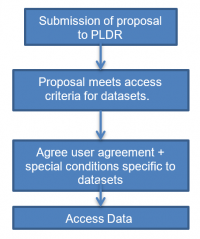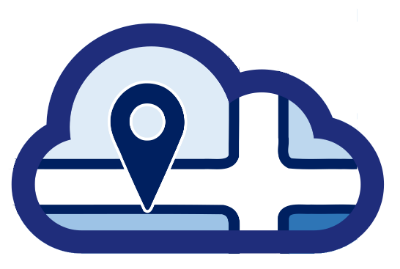- PLDR
The ARC NWC Household Health Survey is a longitudinal neighbourhoods survey. The first wave was carried out in 2015, 20 disadvantaged and 8 less disadvantaged neighbourhoods across the North West Coast. Public health interventions are being implemented with resident advisors in 10 of the disadvantaged neighbourhoods (Neighbourhoods for Learning). The second wave of the survey was carried out in 2018 and only the 20 disadvantaged neighbourhoods were surveyed. The impact of ARC NWC interventions will be assessed in future waves of the survey. A total of 7,731 visits were conducted in Wave 1 and 2 of the survey. The survey covers a wide range of social, environmental, psychological, behavioural, service usage, and health factors.
Approval for data access.
To access HHS data users will need to submit a brief proposal (PLDR Data Access Request) to the address [email protected] outlining which version of the survey dataset they wish to access, data security arrangements in place and how they meet the criteria for access below (see figure 1). Access to the data will be authorised following approval from the Place-based Longitudinal Data Resource (PLDR) governance board. Users will also be required to sign a user agreement (PLDR User Agreement) before being given access to the data.
Figure 1. Data Access Process.

Access criteria for use of HHS data.
- Does the proposal demonstrate active involvement of ARC NHS and/or Local Authority NWC Partners in the identification of research questions, plans for analysis and dissemination?
- Does the proposal outline how appropriate members of the public are going to be involved in developing and informing the analysis and applying findings from the research?
- Does the proposal identify how the proposed work will contribute to ARC NWC’s overall aim of reducing health inequalities?
- Does the proposals clearly identify the implementation or applied research topic to be addressed?
- Does the proposal minimize the risks of identification of individuals or households, or where appropriate organisations?
- Is the analysis proposal feasible with sufficient resources /expertise in the team (NIHR or matched) to carry out the planned analysis.
Datasets.
Two versions of the survey dataset are available:
2 safeguarded versions of the HHS dataset.
HHS data 1. No geographical identifiers. This will contain the full set of variables included in the survey apart from any indicators of geographical location (i.e postcode, LSOA, local authority). Data linkages to area measures (e.g IMD) can be requested in the proposal and these will be added to the dataset by the PLDR, and the geographical identifiers then removed. A pseudonymised code identifies the sample neighbourhoods and a variable will identify the neighbourhood type (NfL, deprived comparator, less deprived comparator).
HHS data 2. – with small area geographical identifiers. This will contain the full set of variables included in the survey and small area indicators of geographical location including neighbourhood identifiers and LSOA codes. This dataset is currently only available to member organisations of the ARC NWC and it does not include postcode.
Statistical disclosure control.
In a final step a statistical disclosure control plan is applied to all research outputs from ARC NWC research projects using HHS data. This plan is included in the User Agreement signed by ARC NWC Approved users as outlined below:
- The Agreement holder will ensure that tables do not report numbers or percentages in cells based on less than 5 cases. Cells based on less than 5 cases should be combined with other cells or, where this is not appropriate, reported as 0 percent.
- Where the agreement holder is proposing publishing statistics derived from safeguarded data at local authority level or lower they must contact the PLDR governance board to gain confirmation of the confidentiality of any outputs for publication.
- Graphical outputs should be based on non-disclosive data. The Agreement holder will take particular care not to report extreme outliers.
All research outputs are submitted to the PLDR board prior to publication to check they meet this disclosure control policy.

